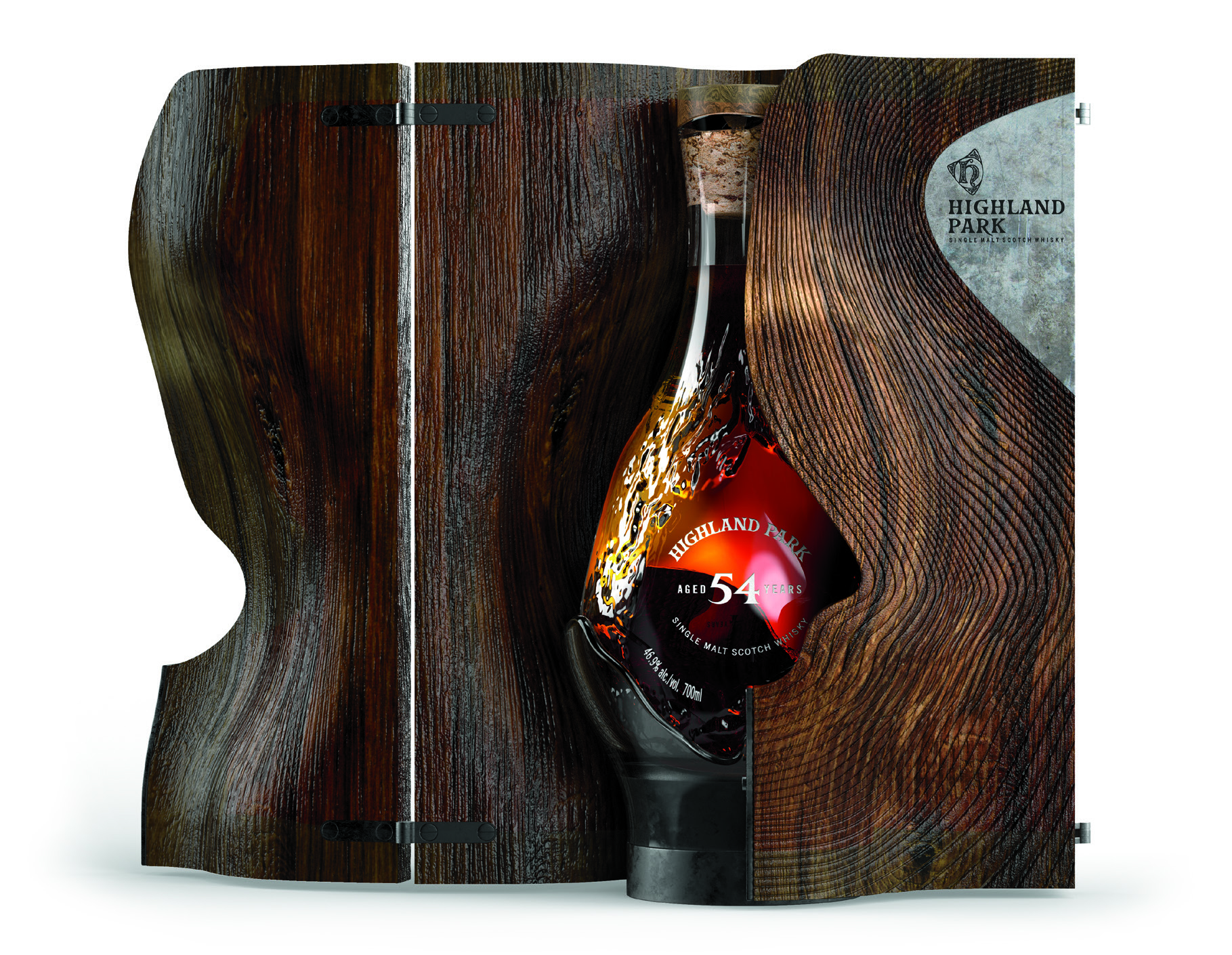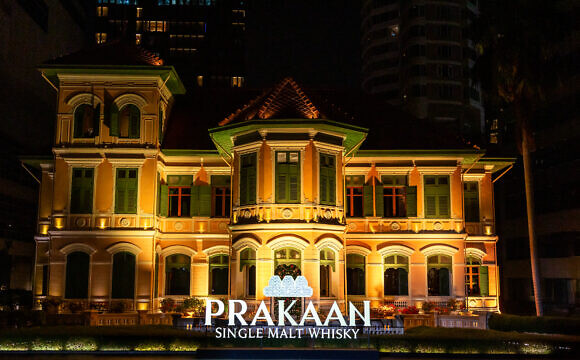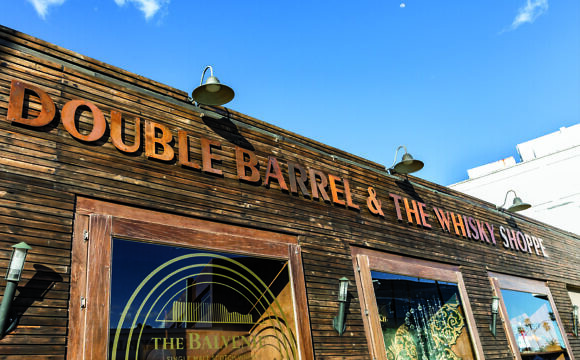ว่ากันว่าเมื่ออายุมากขึ้น คนเรายิ่งเป็นตัวของตัวเองมากขึ้น ซึ่งคำตอบก็น่าจะเป็น แน่นอน มีทางเลือกอื่นอะไรอีกบ้าง? แต่คำถามที่น่าสนใจกว่าคือ สิ่งเดียวกันนี้ใช้ได้กับสก๊อตวิสกี้ด้วยหรือเปล่า?
คำตอบที่ได้จากการจิบวิสกี้สักแก้วนั้น ชัดเจนว่า ใช่ สก๊อตวิสกี้ซิงเกิลมอลต์อายุ 54 ปี จาก Highland Park ซึ่งเป็นวิสกี้ที่เก่าแก่และหายากที่สุดที่เคยผลิต มอบประสบการณ์ราวกับการเล่าเรื่องราวทั้งหมดของโรงกลั่นเหล้าแห่งนี้ไว้ในทุกๆ หยด เหมือนการรวมตัวกันของเหล่าชนเผ่าในงานเลี้ยงฉลองอันยิ่งใหญ่ แต่เพื่อที่จะเข้าใจว่า Gordon Motion ผู้เชี่ยวชาญด้านการผลิตวิสกี้ บรรลุถึงความกลมกลืนเช่นนี้ได้อย่างไร เราจำเป็นต้องเข้าใจก่อนว่า Highland Park เริ่มต้นจากอะไร นั่นหมายความว่าเราต้องเข้าใจพีทของหมู่เกาะออร์คเนย์ก่อน
พีท ซึ่งเป็นเชื้อเพลิงที่ให้กลิ่นรมควันอันเป็นเอกลักษณ์ของสก๊อตวิสกี้ ไม่ใช่แค่เศษซากพืชที่อัดแน่นกันมาเป็นเวลานับพันปีเท่านั้น แต่ลักษณะของพีทแต่ละชนิด ยังสะท้อนถึงพืชพันธุ์พื้นถิ่นอีกด้วย Highland Park บนหมู่เกาะออร์คเนย์ เป็นโรงกลั่นวิสกี้ชั้นนำที่อยู่ไกลที่สุดทางเหนือของสก๊อตแลนด์ ด้วยสภาพอากาศที่แห้งแล้งและไร้ต้นไม้ ทำให้พีท Hobbister Moor ไม่มีเนื้อไม้เลย ประกอบด้วยหญ้าและดอกไม้ป่าที่แข็งแรงเท่านั้น ส่งผลทำให้มันถูกเผาไหม้ได้อย่างมีกลิ่นหอมของดอกไม้และทุ่งหญ้าอันเป็นเอกลักษณ์ที่หาจากที่ไหนไม่ได้อีกแล้ว แม้ว่าถังเชอร์รี่จะเป็นอีกหนึ่งเอกลักษณ์ของแบรนด์ แต่พีททำให้ Highland Park แตกต่าง
เมื่อเวลาผ่านไป แก่นแท้นั้นจะมีรูปแบบที่แตกต่างกัน เหมือนแฝดชายหญิง บางครั้ง เช่นเดียวกับรุ่น 12 ปีและรุ่น 25 ปีที่วางจำหน่ายอยู่ในปัจจุบัน ผลไม้จากถังเชอร์รี่จะมีกลิ่นโน้มนำ โดยมีกลิ่นของแอปริคอตแห้งและหมากฝรั่งรสกล้วย ในขณะที่รุ่นอื่นๆ เช่น 18 ปีและ 30 ปี ปัจจุบัน กลิ่นของพีทและไม้จะเด่นชัดกว่า ผ่านกลิ่นของลูกเกดที่เคลือบช็อคโกแลตเข้มๆ ยาสูบซิการ์ และหนังเก่า โปรไฟล์ทั้งสองแบบนี้สามารถพบได้ทั่วทั้งผลิตภัณฑ์ของ Highland Park แต่ละขวดจะมีแนวโน้มไปทางใดทางหนึ่ง
แนวคิดสำหรับการบรรจุขวดนี้ เริ่มต้นขึ้นในปี 2008 เมื่อ Gordon Motion ค้นพบกลุ่มถัง 10 ถังใบในคลังเก็บของเขา ซึ่งยังคงความสดชื่นและมีชีวิตชีวาอย่างผิดปกติแม้ว่าจะผ่านไปสี่ทศวรรษแล้วก็ตาม เขาผสมวิสกี้เหล่านั้นเข้าด้วยกันในถังเชอร์รี่ ยุโรปที่เติมครั้งแรก จากนั้นปล่อยให้เหล้าได้พักอีก 14 ปี ก่อนที่จะเปิดตัวสู่โลกในชื่อ Highland Park 54 Year Old
น่าทึ่งมากที่วิสกี้ราคา 54,000 ดอลลาร์สหรัฐฯ ซึ่งมีเพียง 225 ขวดทั่วโลก สามารถแสดงทั้งสองโปรไฟล์ได้อย่างเท่าเทียมกัน โดยมีความชัดเจนและไดนามิกเป็นพิเศษ กลิ่นผลไม้มาเป็นอันดับแรก และมีความโดดเด่นอย่างน่าประหลาดใจเมื่อเทียบกับอายุ โดยมีกลิ่นของลำไย แอปริคอตแห้ง และลูกพีช ก่อนที่กลิ่นพีทจะมาปรากฏในช่วงกลางของลิ้นชิมด้วยรสชาติของดิน, คาราเมล, เฮเซลนัท และกลิ่นดอกไม้ป่าไม่มีใครเหมือนใคร
ไม่ใช่เรื่องแปลกใหม่ที่จะรสชาติมากมายขนาดนี้จะถูกบรรจุลงไปในวิสกึ้ขวดเดียว สก๊อตวิสกี้เก่าแก่ มักมีเรื่องราวมากมายที่จะบอก แต่ยากที่จะสื่อสารออกมาได้อย่างชัดเจนและยอดเยี่ยมเท่ากับขวดนี้ และสะท้อนถึงความเป็น Highland Park ได้อย่างสมบูรณ์แบบที่สุดเท่าที่เคยมีมาเลยก็ว่าได้
บทความโดย Jason O’Bryan
It’s said that with age, one becomes more oneself. To which you might reply—sure, what other choice is there? The more intriguing idea is whether the same applies to Scotch.
The answer, in a dram, is yes. Highland Park’s 54-year-old single malt, the oldest and rarest whisky it has ever produced, manages to tell the distillery’s whole story in a sip, bringing its varied personalities together like clans at a feast. But to comprehend how master whisky maker Gordon Motion achieved such harmony, you first have to understand where Highland Park starts. And that means understanding Orcadian peat.
Peat, the fuel that gives Scotch its smoke, is no more than thousands of years’ worth of compacted plant matter, which renders the character of any peat a reflection of the local flora. Highland Park, on the Orkney Islands, is Scotland’s northernmost major distillery, so weather-beaten and barren of trees that its Hobbister Moor peat is woodless, composed entirely of grasses and hearty plains flowers, making it burn with a floral, heathery smoke that tastes like nothing else. While sherry barrels are another hallmark of the label, it’s the peat that makes Highland Park unique.
With age, that singular essence takes divergent forms, like fraternal twins. Sometimes, as with the 12-year and the current release of the 25-year, fruit from the sherry barrels dominates, with notes of dried apricot and banana-flavored chewing gum. In others, such as the 18- and the current 30-year, peat and wood speak louder via hints of dark chocolate–covered raisins, cigar tobacco, and old leather. Both profiles are found throughout Highland Park’s portfolio, but individual bottles tend to favor one or the other.
The idea for this bottling was planted back in 2008, when Motion discovered a group of 10 casks in his aging house that retained unusual vibrancy and freshness despite being four decades old at that point. He married the spirits together into first-fill European sherry casks, then let the resulting liquid age another 14 years before introducing it to the world as Highland Park 54 Year Old.
Remarkably, this $54,000 whisky—of which only 225 bottles were made available globally—manages to showcase both profiles equally, with exceptional clarity and dynamism. The fruit arrives first and with startling force given the age, redolent of lychee, dried apricots, and peach before the peat announces itself in the mid-palate with earthy flavors of caramel, hazelnuts, and those unmistakable plains flowers.
It’s not unprecedented to fit this much flavor into a bottle. Old Scotch often has a lot to say, but rarely does it articulate itself so lucidly or so well. To be sure, this bottle might be Highland Park at its most complete.
The article by Jason O’Bryan








